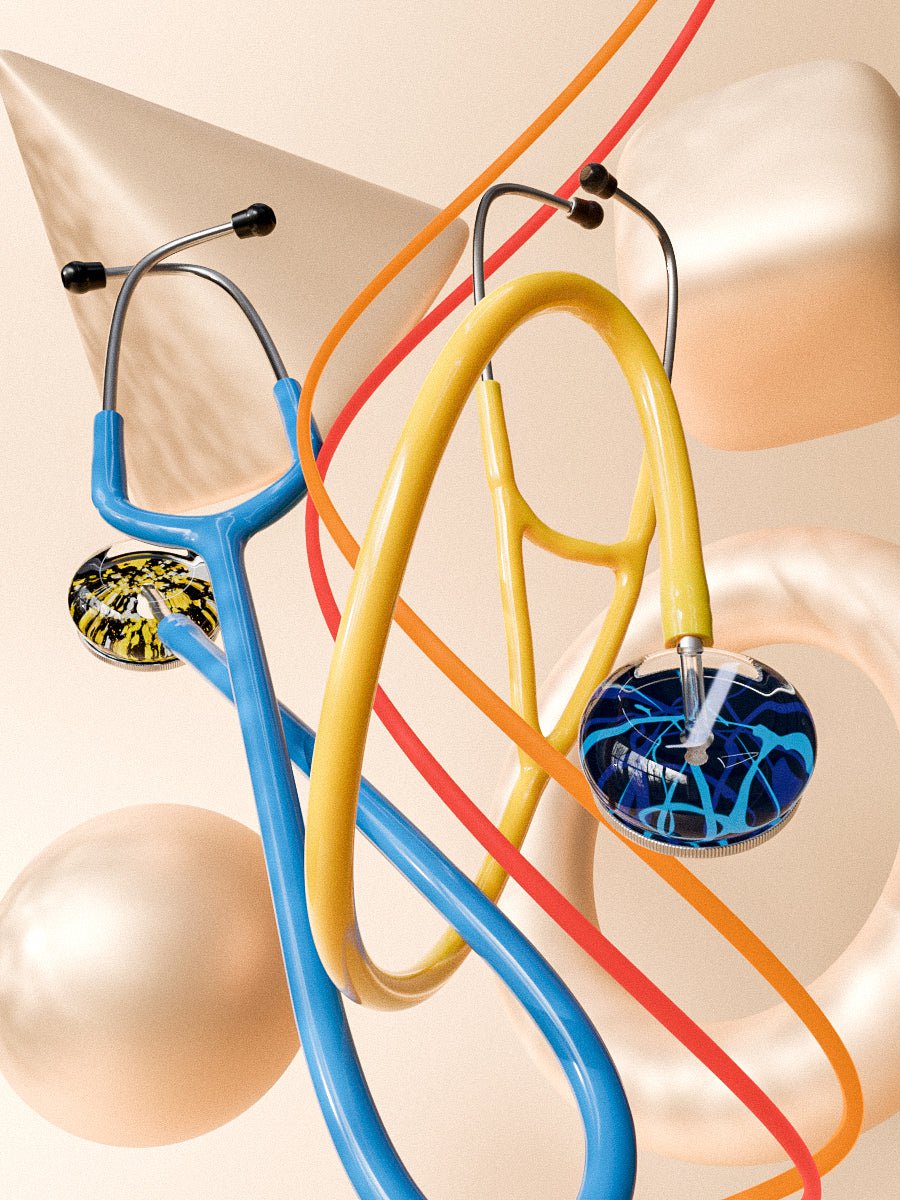With any cleaning method, if the diaphragm is removed to clean it and the underside of the acrylic bell, where the design is located, it is important to ensure all parts are completely dry before reassembly. The diaphragm is meant to be air-tight to the head and any moisture that remains trapped between the diaphragm and the head could affect sound quality and, if left over a long period of time, cause the design to separate from the head.
The same goes with using your Ultrascope for marine and aquatic veterinary treatment! It is a good idea to remove the bell from the tubing and remove the diaphragm and retaining ring from the bell every now then after use to make sure no water has seeped in. The Ultrascope is designed to be air-tight but not necessarily water-tight. It will function great underwater but any water that gets inside can disrupt performance. After use in a saltwater environment, please give the metal parts a quick rinse to prevent any potential for corrosion.
With any cleaning method, if the diaphragm is removed to clean it and the underside of the acrylic bell, where the design is located, it is important to ensure all parts are completely dry before reassembly. The diaphragm is meant to be air-tight to the head and any moisture that remains trapped between the diaphragm and the head could affect sound quality and, if left over a long period of time, cause the design to separate from the head.
The same goes with using your Ultrascope for marine and aquatic veterinary treatment! It is a good idea to remove the bell from the tubing and remove the diaphragm and retaining ring from the bell every now then after use to make sure no water has seeped in. The Ultrascope is designed to be air-tight but not necessarily water-tight. It will function great underwater but any water that gets inside can disrupt performance. After use in a saltwater environment, please give the metal parts a quick rinse to prevent any potential for corrosion.

